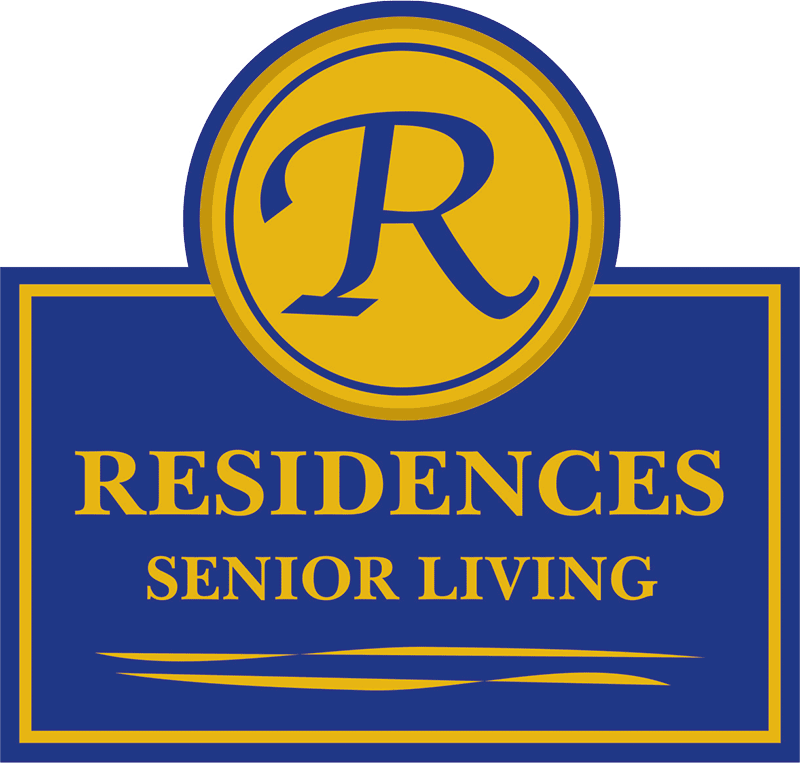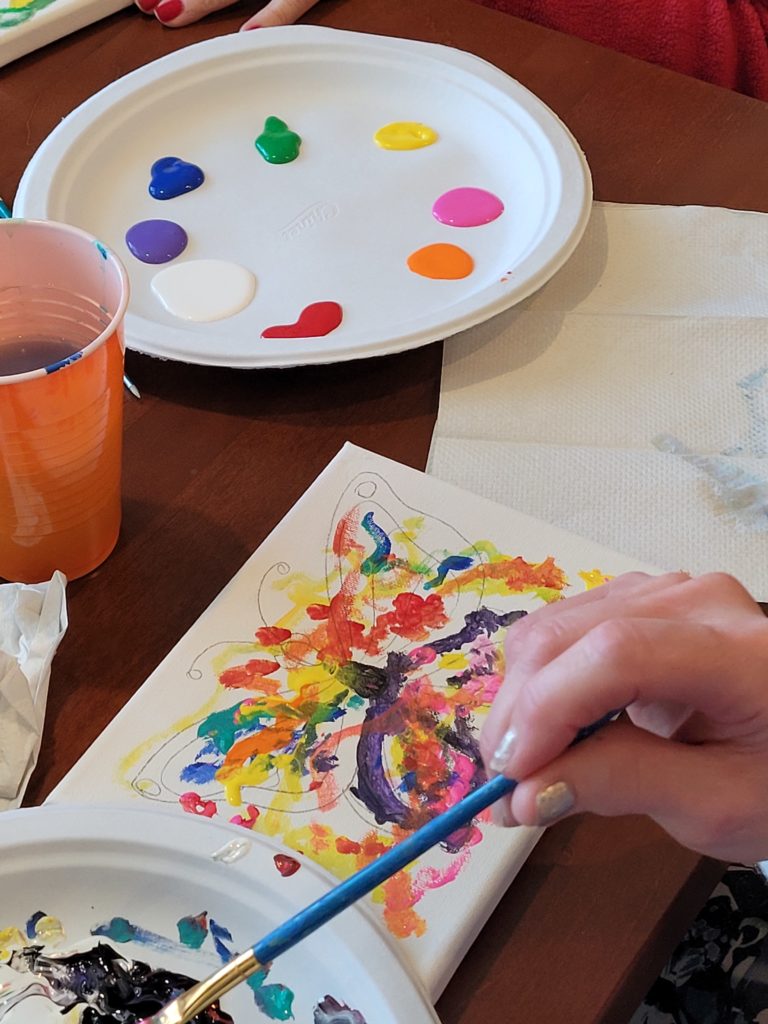
You don’t even have to know how to draw stick figures to experience the joy of smooshing color across a sheet of paper with a brush or a marker. That’s right, “smooshing” —because the beauty of making beauty is that while others may want to call it art, you can call it fun! You can laugh and say “I don’t know what I’m doing,” to the other ladies and gents sitting across the table from you who are actually admiring your creation while trying to figure out theirs. That’s what art simply needs to be for anyone, any senior who finally gets the time to enjoy a measure of leisure—fun!
Art for seniors, or anyone, should be an experience as free as it is for the elementary school age child who dives right in, wanting to grab all the crayons and paints and markers with all those luscious colors. There’s an urge to create, to make something, when there’s a blank sheet of paper or a canvas staring at you along with all that “eye-candy” of colors. All you need from that point on is a friendly someone to guide you, prompt you, help you get started when you’ve never tried it before.
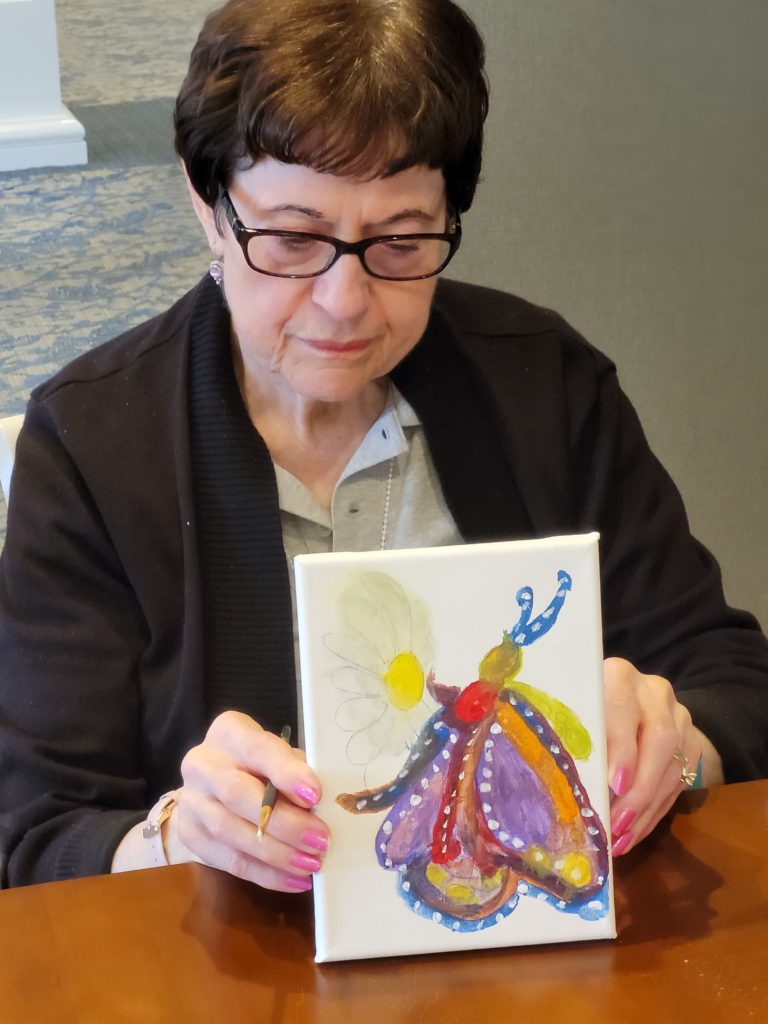
Most residents in senior living today were not afforded the luxury of time to try something new such learning the processes involved with making art. They were working, pursuing careers, raising families, perhaps taking care of their parents. Whether they are called Life Enrichment, Life Style, or Activities Directors, any facility where seniors live have staff whose primary function it is to create opportunities for residents to interact with others, and most if not all, will use art as a means to this end. Art in senior living is therapeutic.
Art for seniors, at its therapeutic best, is not based on talent or ability. Art for seniors is about participation. In senior living there is a diversity of interests as well as many that are shared or more common. Residences Senior Living’s Life Enrichment Teams agree that one of the beauties of bringing in art for seniors as part of the monthly programming is that art sessions bring people together and they find out helpful information about each other that benefits all.
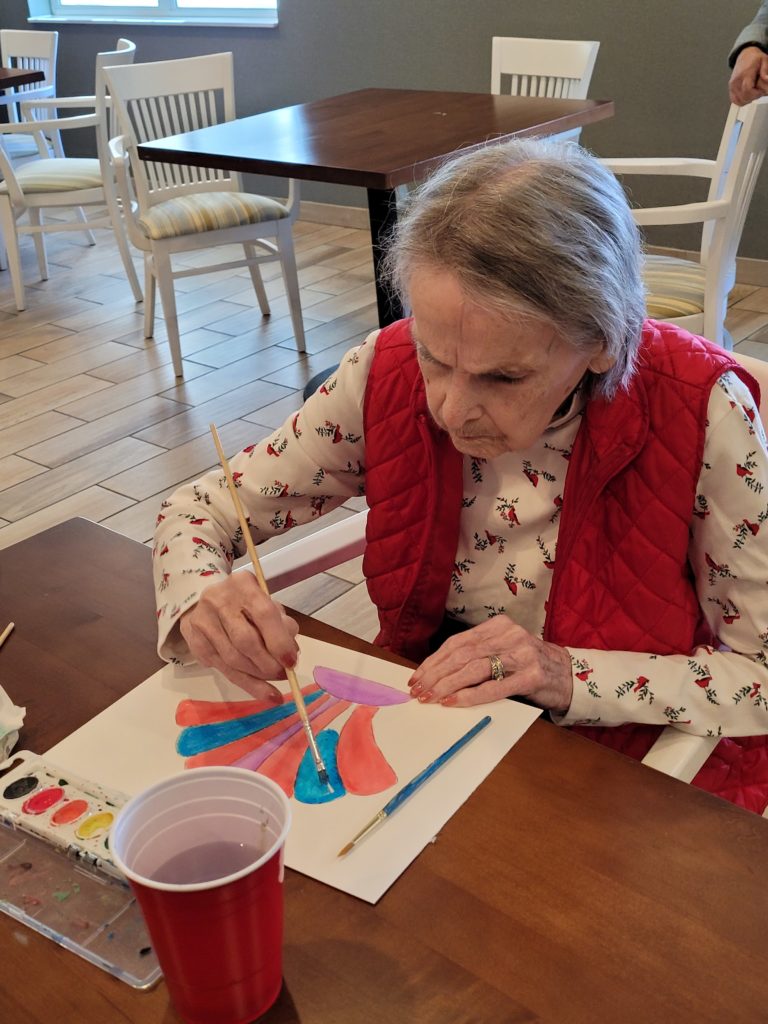
For example, some seniors may have painted or drawn with different media; they may have talent. They may have learned the different processes involved. They may have taught themselves how to handle materials. Perhaps they’ve had an interest in art appreciation, visited galleries and museums, attended lectures. These seniors will gravitate toward an art activity. They will invite others to join in and have fun. They will say they haven’t painted in years or their hands are not as steady as they used to be, but they will be the seniors to dive in and encourage others. Does their ability contradict that art for seniors is not based on ability?
Absolutely not, bringing forth the artists in senior living with their talents and skills benefits these individuals much the same as the others they will invite to the art table. The novice is going to receive accolades from others, impress themselves, and thus receive pleasure and an increase in self- esteem. Perhaps the talented artist hasn’t held a brush in years. As it all rushes back, he or she will have the same experience just in a little different way: “I didn’t think I could do it anymore.” And of course, the admiration of others will be theirs: “Look at John’s—I didn’t know he was an artist!” Artists and novices together—it’s the beauty of making art in senior living.
Participation in activities is vitally important for seniors in Memory Care environments. Residences at Deer Creek and at Coffee Creek use a program called Painted Pathways created by Painted Palette Studio in Valparaiso to help staff engage Memory Care residents and their families in watercolor painting. Simple line drawings are provided along with watercolor sets and coaching and cueing by the artists and Life Enrichment staff for additional support. The approach is “on purpose” using questions residents have the ability to answer without the usual frustration that accompanies cognitive barriers.
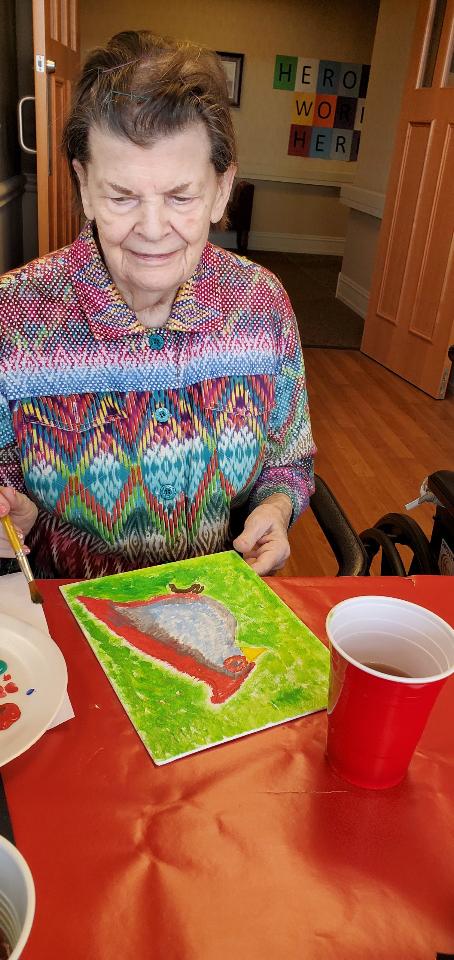
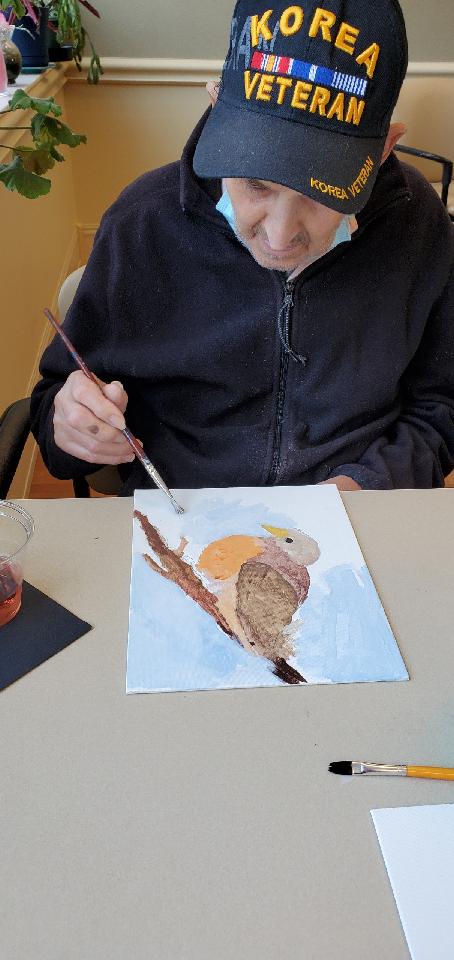
For example, to get started residents are asked “What color do you like—red or blue?” This serves more than one purpose. The question prompts the action; it gives them a simple choice—between two items, it gives control. Sometimes a resident has to feel the brush in the hand to get started. The resident may not understand that it must be picked up, so the prompter must gently pick up the hand and place the brush. The resident and the hand usually recall how to hold it. Sometimes that is enough to start putting color on paper. When it is not, the hand is gently guided so that the feel of brush, water, and color on paper jumpstarts the painting process.
Art guides the science. Movement is so important for seniors, and sometimes more of a challenge for those in Memory Care who have forgotten certain movements or to move at all. Painted Pathways seeks to provide movement in a way that is not as obvious as exercise. That is why it is important for the residents to do as much as possible for themselves during the session. Dipping the brush in the water, swooshing it, shaking off excess, drying with paper towel, dipping in paint and moving the brush on the paper are using neurons as well as muscles.
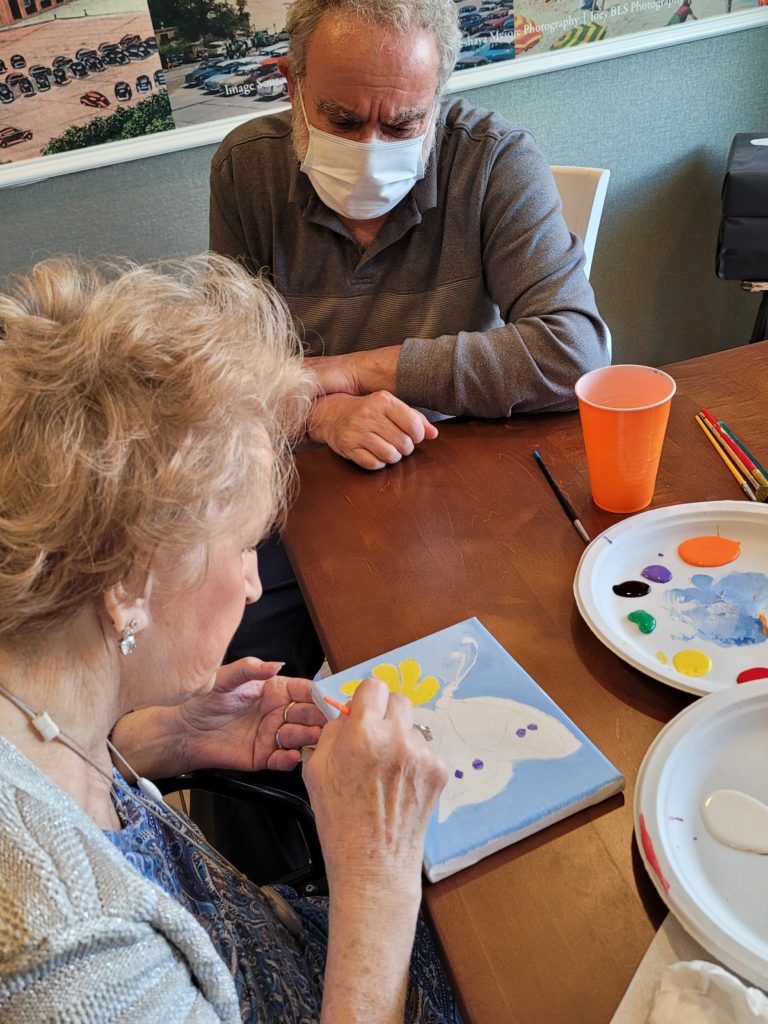
Neurological research indicates that making art can improve cognitive functions by producing new neural pathways and by strengthening the existing, according to an article “Aging: What’s Art Got to Do With It?” featured in Today’s Geriatric Medicine: www.todaysgeriatricmedicine.com/news/ex_082809_03.shtml
The article also lauds Director of the Center on Aging, Health and Humanities Gene Cohen, MD, PhD, at George Washington University in Washington, DC, as the first researcher to conduct a national study that identified that the arts have a positive effect on health and illness as people age.
The final results of the 2021 study are not as yet tabulated, however, there are many positive outcomes according to the author of the article Barbara Bagan, who is herself a certified art therapist and PhD. She states that in her experience she can attest to the “significance, efficiency, effectiveness of expressive art activities offering a wide range of benefits:
- Relaxation
- Sense of control
- Reduction of depression and anxiety
- Socialization
- Encouragement of playfulness and a sense of humor
- Improving cognition
- Offering sensory stimulation
- Fostering a stronger sense of identity
- Increasing self-esteem
- Nurturing spirituality
- Reduction of boredom.”
Residences Senior Living agrees, having seen residents as recipients of all of these benefits evident through programs designed as art for seniors.
One additional benefit to families who visit loved ones in Memory Care is that during a Painted Pathways session, the visit is more relaxing and even fun. Making art together “levels the playing field” especially when you’re both trying to choose a favorite color or paint for the first time. That’s when the laughter, the humor takes over the frustration of wondering what to say next or wondering what word to use when you can’t find the right one. You might say it’s the wonder of art for seniors—a beautiful thing at Residences Senior Living.
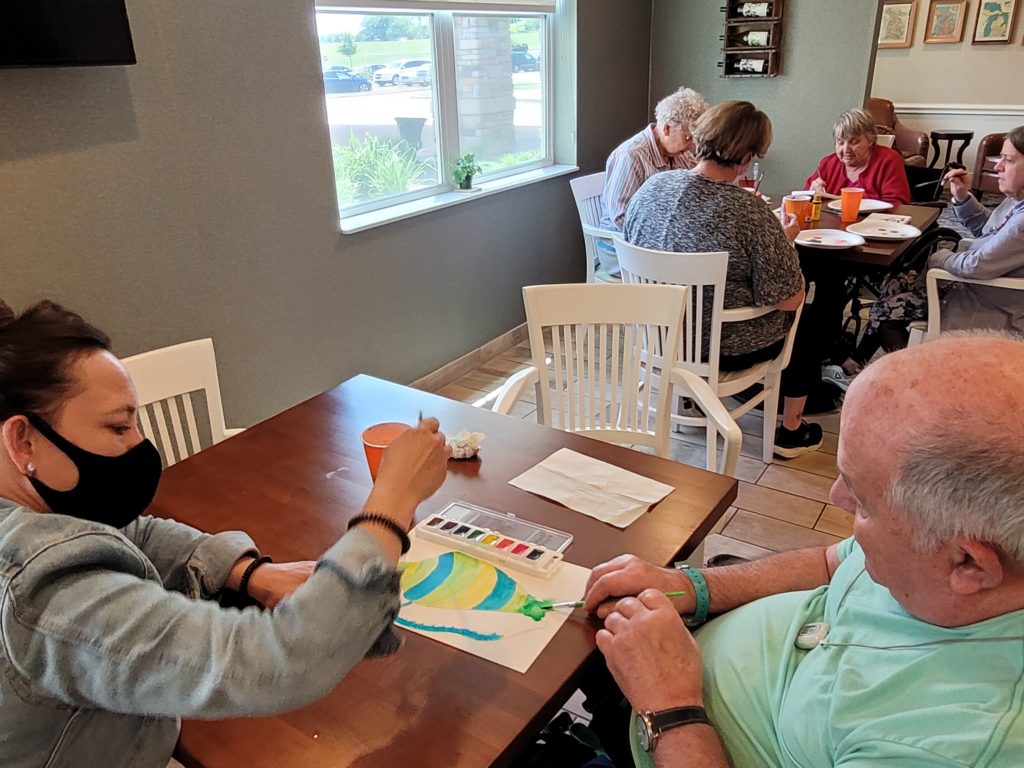
For more information about our monthly programs find the Calendar on our website, visit our Facebook pages to see residents in action, and as always, call us at 1-800-557-9176 to arrange a personalized tour.
